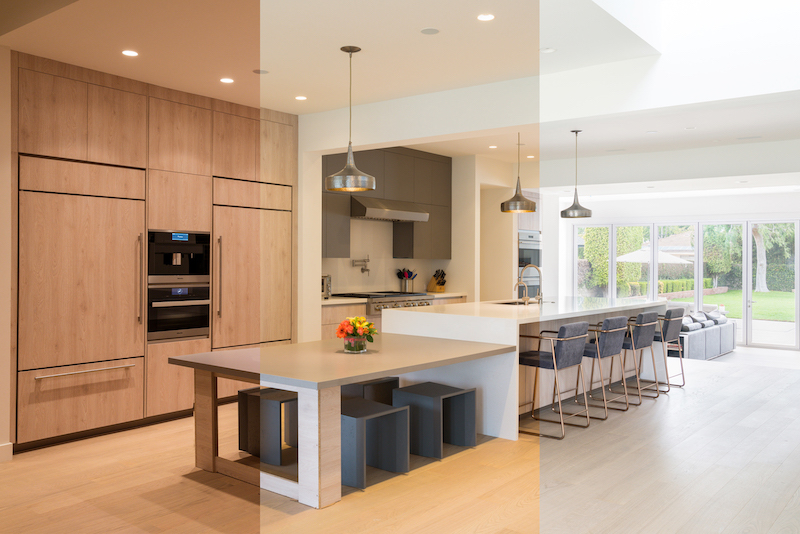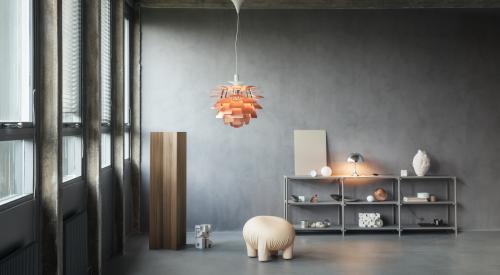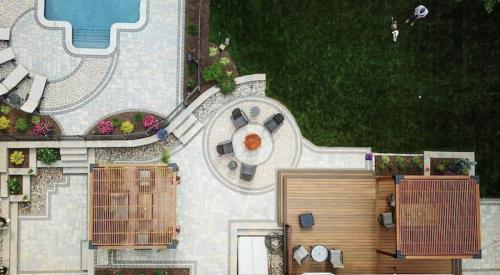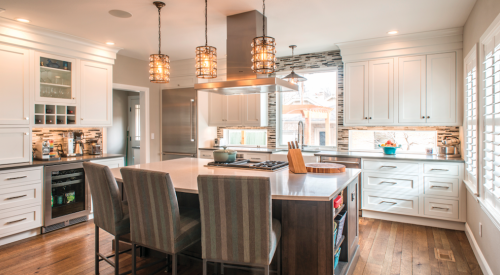Finding the right lighting temperature for a room can be a challenge, but if a builder is successful, the selection can improve a space’s appearance and functionality.
Color temperature refers to how warm or cool a light source is: The lower the temperature is in Kelvins, the warmer the light. Temperature is closely related to the color palette of a room. Warmer temperatures go well with warmer colors, earth tones, and wood grains, while cooler temperatures bring out the vibrancy of blues, purples, and greens. Commonly used temperatures range from 2700K-3300K, according to Jeff Dross, corporate director of education and industry trends at Kichler Lighting.
“If you have a warm surrounding, as in the room has a lot of golds, yellows, beiges and wood tones, I suggest that you use 2700K for that environment,” Dross says. “If your rooms are cooler, meaning you’ve got a black and white, blues, purples, greens, slate, granite, and stainless steel, 3000K is going to look and work better.”
[Related: 2020 LIGHTING GUIDE: STATEMENT LIGHTING, COLOR ARE HOT FOR 2020 AND BEYOND ]

By ohsuriya on Adobe Stock
Color temperature can also affect the space’s overall mood and energy. “The lower the color temperature (2200K-2700K), the more fire-like, or warm the space will feel,” Rick Leeds, director for North American contract sales for FLOS USA, says. “This warmth is generally associated with intimacy and calmness, like a restaurant lit by only candlelight.”
But finding the right temperature for a home isn’t just about averaging the overall look and feel of a project. Lighting designers caution against choosing a single temperature for the entire home--or even a single room. “Limiting homeowners to one temperature is challenging in any space, however, as lighting needs often shift throughout the day,” Cecilia Ramos, says senior architectural market director for Lutron, parent company of the lighting manufacturer Ketra. “For example, a warm light that may feel comfortable in the evening will often contrast starkly with natural light from windows at mid-day.” Designers can then work around that by specifying lighting fixtures that are able to toggle between lighting temperatures based on environmental conditions or timing, or by assessing the conditions of each space.
With so many factors contributing to a well-lit room, the search for the right temperature for each space can be daunting.
Here are five tips for how to find the right lighting temperature:
How Do You Choose Light Temperature?
Unfortunately—or fortunately for lighting enthusiasts—there is no one-size-fits-all when it comes to lighting temperature, as the color palette and function of the room will determine if a cooler or warmer temperature would work best. Dross warns that a mismatched temperature-color palette combination can lead to less than desirable results.
[Related: 7 LIGHTING BRANDS YOU MAY NOT KNOW BUT SHOULD ]
“What happens is you get a mushy, greyed out tone. So your beiges are going to look a little sickly,” Dross says. “You’re not going to get as nice a notice of grain in the woods that might be used in the space. If you use the warmer temperatures with cooler colors, they’re also going to get kind of washed out looking.”
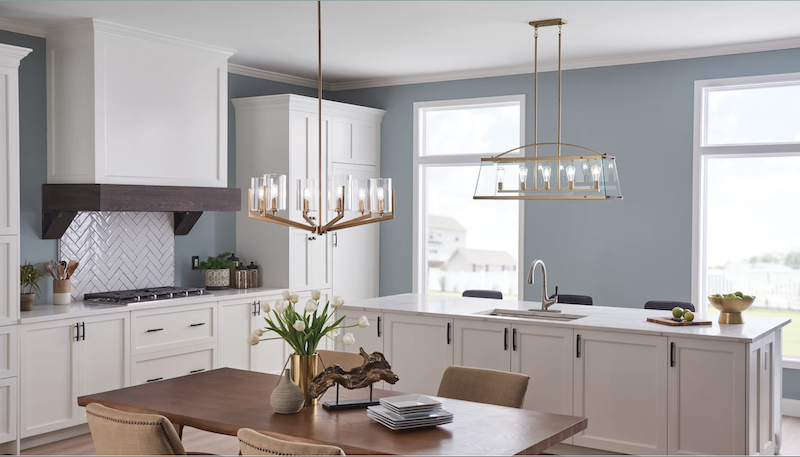
Courtsey Kichler
But if a builder is unsure what color the homeowner wants to paint the house or if there are other circumstances limiting the knowledge of the final look a client is going for, Dross says to go with 3000K as it will give the best average rendering of every color.
How to mix lighting temperatures
Builders and designers shouldn’t shy away from mixing color temperatures in a single room, but Dross says that you must do it carefully. For example, if a kitchen has a row of recessed can lights, it would be unwise to throw in a random 2700K bulb when the rest of the set are 3000K. Still, choosing the right temperature for specific areas of the home, such as under the cabinets or in accent lighting, can add purposeful touch.
“Let’s say you have this big space where a kitchen is connected to a living area,” Dross says. “Your task is going to be different on one side of the area than the food preparation area.” While the living area would call for a warmer temperature, a modern kitchen may do better with a cooler one.
[ Read More: AN INTERACTIVE SPEAKER LIGHT THAT MIMICS THUNDER AND LIGHTING ]
Knowing how to layer lighting can help determine how to best mix temperatures in a space. According to Dross, there are three main lighting layers: task, ambient, and accent. “You have to understand what you’re going to do in a room, establish an ambient light that defines the perimeter and give you that overall level of light, and then thirdly, you start looking at accent lighting,” Dross says.
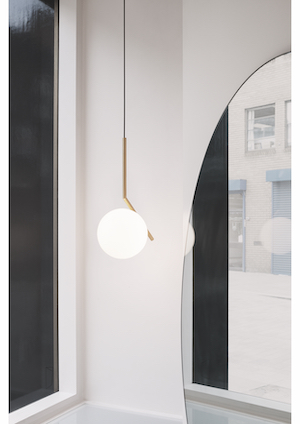
Courtsey FLO
Even in a kitchen with a lot of oak cabinetry that looks best under 2700K lights, some task or accent lighting in the same room can look better lit by cooler temperatures. Dross says a hanging pendant over a kitchen island with glass details calls for 3000K, while up to 4000k can make crystals sparkle in a cabinet.
Pay Attention to the Bathrooms
Master bathrooms are a space where builders and designers can personalize the lighting temperature to help homeowners look their best. Dross says personal grooming habits can direct lighting choices: Someone who is into makeup will need a much brighter, cooler lighting setup than someone who does the bare minimum. Lighting temperatures in the 3000Ks will bring out the vibrancy of eyeshadows, lipsticks, and other high-pigment beauty products.
Additionally, the bathroom can offer even more challenges because of the multiple tasks in one room. Sometimes, mixing color temperatures or installing lighting that can switch settings is the best way to light a bathroom. “A relaxing tub soak will require significantly different lighting than the morning shower and dress for work,” Leeds says. “Additionally getting ready for a night out would require yet another scene to be created in that same bathroom. It’s no longer normal to put one type of recessed downlight in a bathroom over the sink, shower, and commode and call that adequate.”
Tips and tricks for client-centred lighting design
To take lighting design to the next level, a home designer must look beyond the home and consider the client’s specific needs. For example, Dross says knowing the temperature of the lighting at a client’s workplace can help determine what lighting is needed in the space where they get ready for the day.
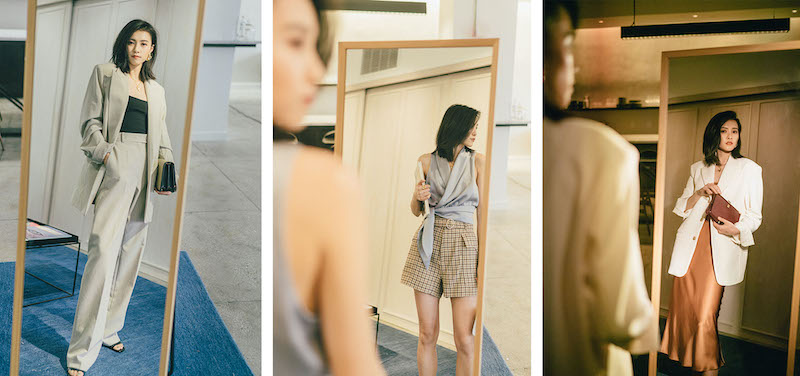
Photo: Courtesy of Ketra, Featuring Lily Zheng
“If you’re in a job that has some aesthetic connection, such as an architect or designer where people are going to pay attention to what you look like, you might in fact want to have that secondary light source,” Dross says. “And that first light source could be a little warmer, so if you’re going to dinner with your spouse, you can turn on that warmer color and see what you look like in that candlelit restaurant.”
If the master bedroom has a walk-in closet, builders may want to install two different light sources in it so that the homeowner can prepare for different environments inside and outside of the home. If an office has 4000K fluorescent lights, including a 4000K option will ensure a client looks the same at home and at work and avoid any navy blue sock and black suit mix-ups.
[ Read More: ATELIER ANAKA DEBUTS NEW 2020 COLLECTION OF HANDMADE LIGHTS ]
Kelvins are not the end all, be all
Color temperature (CCT) is one of three lighting elements that contribute to the look and feel of a room, according to Leeds. The other two are a light’s color rendering index (CRI) and its intensity (how bright or dim a light appears). By considering CCT, CRI, and intensity ratings, a builder can best choose the lighting temperature for a space. For example, brightly lit spaces inject energy into a room, while dimmer lighting brings calmness.
To double check a light will match a room’s feel, Leeds recommends that builders and designers head over to a lighting showroom to check out different color temperatures and how they will interact with the home’s interior.
“Most lighting showrooms and retailers will have a color temperature comparison display that will allow a builder or designer to choose the right lighting temperature,” Leeds says. “Bring representative color swatches as color can appear significantly different under different color temperatures and color renderings.”
Though CCT and CRIs are often confused, Leeds says that they measure different components of a light: CCT describes a light’s warmth or coolness, while the CRI is a rating of how close a light renders material colors compared to natural sunlight. “The second value, CRI, needs to be as high as possible, preferably rated 80 or better,” Leeds says. “90 and up is excellent at rendering colors true and is best suited for applying makeup and enjoying a meal.”
One quick tip to find a good CRI guaranteed to be a CRI of 85 and above? Dross says to find a product that is approved for California, so it’s guaranteed to be a 90 CRI. If you can’t find that, the next best thing is to find a product that is Energy Star Certified.
[ Related: WHAT KIND OF LIGHTS CAN YOU GET FOR UNDER $100? YOU’D BE SURPRISED ]
